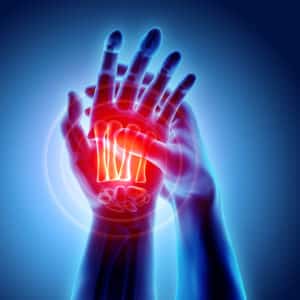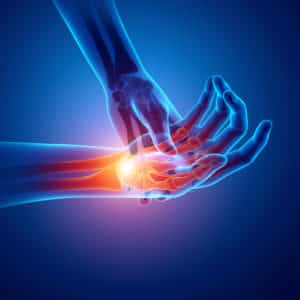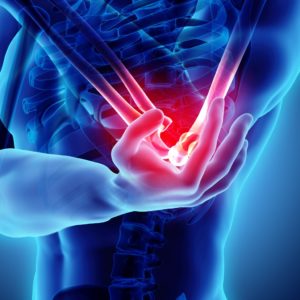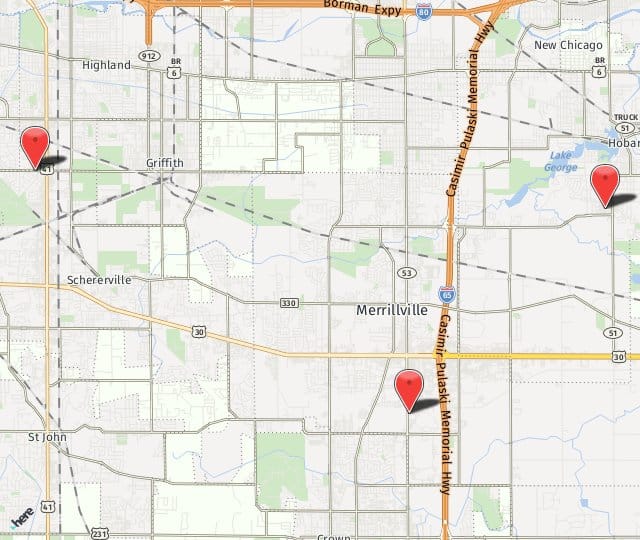
The wrists and elbows are important joints in the body. These joints allow the arms and hands to move freely and without pain. Both of these joints, as well as the bones and joints in the hands, are susceptible to injury. An injury may be traumatic, such as a sports collision, or it may be due to overuse that has repeatedly put stress on a joint, resulting in inflammation or breakdown of the joint structure.
Hand
Hand Injury Symptoms
- Pain in the hand or fingers
- Swelling
- Tingling or numbness
- A grating or clicking sound when moving a finger or the hand
- Obvious physical deformity of a finger
- Limited range of motion in a finger or the hand
Causes Of Hand Injuries

The fingers and bones in the hand are susceptible to impact injuries. These most often occur when a person falls on an outstretched hand. However, the fingers may also be injured by blunt trauma to a straightened finger or from an object falling or pressing on the finger. Joint and tendon conditions in the hand may result from overuse and degradation of the tendon sheath or joint structure.
Common Hand Injuries
- Skier’s thumb is a condition that may result from a fall onto the hand that bends the thumb backward. This injury tears the ligament at the base of the thumb.
- Sprains and strains are common hand injuries that may occur in a joint or muscle in the hand.
- De Quervain’s tendonitis is an overuse injury that affects the tendon that runs down the forearm, through the wrist, to the thumb. Repetitive use from a certain activity, such as holding a golf club, causes inflammation in the tendon.
- A jammed finger is also a common injury, often related to athletic activity. A jammed finger may be as mild as a sprain in the joint or it may be as severe as a dislocation or fracture.
What Hand Injury Treatment Options Do you offer?
At Bone & Joint Specialists, we’ve seen every sort of hand and finger injury, and our various treatments depend upon the location and severity of the injury. Surgery may be necessary, particularly when dealing with ligament tears or fractures. But treatment can be as simple as icing and medication, or “buddy-taping” an injured finger to the neighboring uninjured finger. Splints, braces, casts, and physical therapy may be involved.
Here are a few specific hand injuries and treatment options:
- Jammed fingers: Ice and buddy tape is usually all that’s needed.
- Finger fractures: X-rays, ice, and splinting after finger is realigned properly
- Mallet finger: Ruptured tendon in fingertip requires splinting for 8 weeks
- Finger dislocation: Often occurs at middle joint of finger, requires x-rays and buddy taping or splinting
- "Jersey finger” tendon tear: Occurs when grasping and item, such as a jersey, and it is pulled away. Typically requires surgery for repair.
- “Skier’s thumb” ligament tear: May require surgery or casting
What Are the Risks of Leaving Hand Injuries Untreated?
For hand injuries, such as fractures, the main risk is that the bone will not heal properly. This can lead to visible deformities, misalignment, limitation of future movement, and even infection. Unaddressed ligament or tendon tears will typically result in loss of function in the finger served. While we all jam and strain fingers at times, any lingering pain or sudden more acute pain needs to be checked out with our team at Bone & Joint Specialists.
What People Say About Us!
If you are having any kind of bone or joint problems, this is the place to go! The staff are friendly and very knowledgeable. Best place around!
Click here to read more reviews.
Wrist
Wrist Injury Symptoms
- Pain in the wrist or hand
- Numbness and tingling in the hand
- Limited range of motion in moving the wrist and hand
- Swelling or bruising in the wrist or fingers
- A grating or clicking sound when moving the wrist
- Sharp pain in the wrist
- Difficulty making a fist
- General weakness in the hand or wrist
Causes of Wrist Injuries

Falls onto an outstretched hand account for the majority of wrist injuries. However, there is also a chance that certain inflammatory conditions, such as carpal tunnel, may result from the overuse of the hand using improper posture. For example, typing does not cause carpal tunnel, but typing using poor hand, wrist, and arm posture can cause this condition.
Common Wrist Injuries
- Sprains, strains, and fractures are among the most common wrist injuries. Most are related to a fall onto an outstretched hand. Any sudden impact on the wrist can result in this type of injury.
- Carpal tunnel syndrome is an example of a repetitive stress injury in the wrist. This condition involves inflammation in the carpal tunnel, a small passageway of bones through which nerves pass on their way to the hand.
- Ganglion cysts are not considered injuries but do represent a condition that may develop on the part of the wrist below the forearm.
What Wrist Injury Treatment Options do you offer?
We see wrist injuries most commonly after the patient has fallen on an outstretched hand, whether during a sports event or something as innocent as slipping on an icy Indiana sidewalk. Casting is common, although surgery can be also required in more elaborate cases of trauma. Physical therapy may be needed.
A few specifics:
- Wrist bone fracture: Often from falling on an outstretched hand. Typically requires x-rays or CT scan. May require surgery. Casting is common.
- Wrist ligament tear: Often due to twisting or impact. Depending upon the degree of the tear, surgery could be necessary. Otherwise casting could be sufficient.
- Carpal tunnel syndrome: Early diagnosis can use nonsurgical methods, such as splinting the wrist and use of corticosteroids to calm inflammation. If treatment is delayed the problem could require surgery to remove pressure on the median nerve by cutting the ligament.
What Are the Risks of Leaving Wrist Injuries Untreated?
Most minor-to-moderate wrist sprains will heal on their own, but it is wise to have them checked. When the injury is accompanied by continued swelling or pain when moving the wrist or your hand, this is time to have the injury looked at. Untreated carpal tunnel syndrome can lead to permanent damage to the median nerve in the wrist. This can lead to weakness and loss of function in the thumb and first three fingers of the hand. Left untreated, this damage and function loss can become permanent.
Elbow
Elbow injury symptoms
- Pain or swelling in the elbow joint
- Pain that radiates down the forearm
- Weakness in the arm or hand
- A feeling of instability in the elbow joint
- Stiffness and discomfort when moving the elbow or lower arm
Causes of Elbow Injuries
Many of the elbow injuries that occur are related to overuse rather than a blunt trauma to the arm.

Sports such as golf, tennis, and any activity in which an object is thrown place direct pressure on the various structures that support the elbow joint. Therefore, the repetition of certain activities can cause inflammation and breakdown of the joint. Some injuries to the elbow, such as bursitis, may be caused by continually leaning onto the elbows.
Common Elbow Injuries
- Tennis elbow is a common overuse injury that affects the tendon on the outside of the forearm. Due to repetitive motion, the tendon begins to separate from the bone.
- Golfer’s elbow is also a tendon injury related to overuse, but this form of tendonitis affects the inside of the elbow.
- Throwing injuries are common in athletes who routinely throw at high velocities, such as baseball pitchers. Various parts of the elbow joint may be injured by this repetitive motion, including the tendons (Flexor Tendinitis), ligaments (Ulnar Collateral Ligament (UCL) Injury), and bones (Valgus Extension Overload, VEO).
- Elbow bursitis, referred to as olecranon bursitis, may occur in the fluid-filled sac that sits at the pointy tip of the elbow.
- Cubital Tunnel Syndrome is a condition that results from stretching or pressure on the ulnar nerve that runs through the elbow down the arm.
- Sprain, strains, and fractures may occur in the elbow due to traumatic injuries such as a sports incident or fall.
What Elbow Injury Treatment Options Do You Offer?
In the elbow, overuse of the tendons and inflammation of the elbow bursa are the most common injuries. Tennis elbow, golfer’s elbow, elbow bursitis, cubital tunnel syndrome. These are common elbow injuries we see at Bone & Joint Specialists.
Here are a few specific treatments for elbow injuries:
- Tennis elbow: Overuse of the forearm muscles during tennis, swimming, or even doing carpentry or plumbing work. Pain is on outer part of the elbow. Treatment can involve compression armband, but most often physical therapy or home exercises can reduce the inflammation. Surgery is rarely necessary.
- Golfer’s elbow: Pain is on the inner side of the elbow. Inflammation of the tendon is due to repetitive motions, such as used for golf. Stretching exercises are typically all that is needed, along with rest and anti-inflammatory medication.
- Cubital tunnel syndrome: Results from stretching or pressure on the ulnar nerve that runs through the elbow down the arm. Creates pain when shaking hands or performing other grasping motions. A brace can be helpful in keeping the elbow from being overly compressed (such as when sleeping). Physical therapy can help overcome the inflammation, as can anti-inflammatory medication. Corticosteroid injections may be necessary. As with tennis elbow, surgery is rarely necessary.
- Elbow bursitis: When the fluid-filled olecranon bursa becomes inflamed more fluid accumulates in the sac, causing pain. Elbow pads, changes in activity patterns, and anti-inflammatory medications will usually decrease the fluid accumulation. It may be necessary to drain the sac and to inject a corticosteroid.
What Are the Risks of Leaving Elbow Injuries Untreated?
Since most elbow injuries involve the muscles and tendons, if you don’t have them treated, you’ll simply prolong your pain. When you repeat certain arm movements, the tendons at the elbow end of the muscle can develop small tears. This is typical tendonitis. While they will not develop into full tendon tears, the small tears are the cause of your pain. Continuing the activity or motion causing the pain will keep creating more and more small tears, and your pain will continue. In cases of ulnar nerve entrapment, if pressure is allowed to remain on the nerve, the compression can cause permanent damage to the outer half of your ring finger and your pinky finger.
Schedule A Consultation Today!
If you’re interested in learning more about Hand/Wrist/Elbow conditions & treatments please contact us for a consultation at 219.795.3360 or fill out our contact us form here. We will discuss your needs and concerns, and determine your best course of action.


